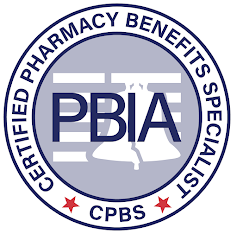Specialty drugs used to be the novelty part of the drug spend: expensive, yes, but unusual. Ten years ago, specialty accounted for 15% to 20% of the money spent on drugs, but the CVS Caremark 2020 Drug Trend Report shows that specialty drugs accounted for more than half (52%) of the pharmacy spend last year.
The 2020 drug trend report from Evernorth (the new Cigna entity that Express Scripts is now part of) also showed that the spend on specialty drugs edged ahead of the spending on traditional medications (50.8% versus 49.2%).
Tyrone’s Commentary:
1) It’s more important than ever to drive high generic drug utilization. A generic dispensing rate or GDR of 80% is not high, relatively speaking. It costs you as much as 2.5% net savings for each 1% below the national average of 90% GDR.
2) Manufacturer assistance programs are a temporary reprieve. First, a drug manufacturer could pull the plug on financial assistance at any moment. More importantly, as more and more new patients initiate a specialty drug therapy regimen, you will find your Rx costs returning back to pre-PAP and pre-CAP program PMPM costs. In a commercial plan, 20 new specialty drug treatments are started per 1000 members annually. Say it with me…cha-ching! Take full advantage of manufacturer derived assistance programs while you can. Restrict the non-fiduciary PBM’s ability to profit from them. The more the PBM benefits from these programs financially the more you and your members pay.
3) Eliminate expanded drug lists or EDLs. If you choose to keep an EDL as part of the benefit design, restrict them. Are you paid formulary rebates for a drug listed on the EDL? Worse yet, these EDLs create an environment where the relationship between physician and patient becomes transactional. Circumvention of a really good formulary is likely to result in wasteful and/or duplicative spending.
4) Lowest net cost formularies, high adherence rates (> 80%) and radical transparency in PBM contracts are and will remain the backbone of an efficiently run pharmacy benefit management program. Be relentless in removing money leaks from employer-sponsored pharmacy benefit programs. That effort starts with achieving radical transparency in your PBM service contract.
5) Education is key to getting to lowest net cost in employer-sponsored pharmacy benefit plans. Only the most sophisticated purchasers of PBM services will have the knowledge and confidence to bind lowest net costs for prescription drugs into contract language and benefit design. Hence, your competitive advantage includes executing good analysis of the correct information then deciding what all of this suggests for your organization. Those who seize the chance and develop a good plan have a higher probability of getting to lowest net cost.
Five therapeutic categories are driving 90% of the specialty trend for CVS Caremark. Autoimmune is the largest drive because of supplemental indications, which is driving more utilization. The other four were oncology, cystic fibrosis, atopic dermatitis and HIV. New oncology products continue to be a large driver of spending and that in cystic fibrosis you are starting to see patients take more drugs per patient.
Evernorth’s report says 17 of the top 25 drugs ranked by total pharmacy spend were specialty medications in 2020.
<<Continue Reading>>











